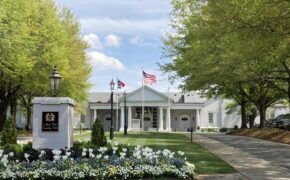South End booms, but where to park?
As cranes rise over South End, traffic and parking become challenging; ‘the city is coming at us’
From his home behind the Lowe’s on South Boulevard, Steve Khentigan likes what he sees about the growth in nearby South End. The Charlotte Rail Trail, he says, is awesome. The new residential buildings, he says, are cool. The scores of new restaurants and breweries make the place lively.
But there’s one outgrowth of the area’s relentless development that he detests. Sometimes, the two-mile drive to the Dowd YMCA can take 20 minutes. “The traffic is brutal,” he says. “The city is coming at us.”
South End is growing like crazy. Its population density of 11 people per acre has increased by 22 times since 2000, according to figures from Charlotte Center City Partners, and it’s expected to increase again by 60% in the next six years. Warehouses, industrial buildings and vacant lots are giving way to dining and drinking hot-spots, luxury apartments and new office towers. On Wednesday, developers announced a new 23-story office tower by Tupelo Honey and the East/West Boulevard light rail stop. (The Ledger reported Monday that something big seemed imminent at the site.) It’s the eighth building of 150+ feet under construction or development in South End.
As uptown spreads into South End, though, it’s accompanied by urban-style headaches. Other fast-growing areas of town might soon have similar experiences: High-rises are on the way to SouthPark and Ballantyne, and uptown is spilling outside of the I-277 loop in all directions.
People interviewed in South End this week said they like all the new development but wish there were a solution for parking and traffic:
- “There’s a lot of people around, so it’s going to be hard, especially on the weekend. It brings a lot of people, and it’s hard to park.” — Michael Peart, 47, who works at a South End restaurant.
- “It stinks right now. They need to put more parking around here. It’s getting too built up not to have parking.” — Bobby Helms, 56, a construction worker from Concord.
- “The construction has made it a lot worse. It’s just a pain in the butt.” — Leah Gunter, 22, catering company worker.

Rise of paid parking: Parking that was once easily available on streets can now be hard to find. The city installed meters a few years ago on some of the most popular streets. And pay lots are starting to take off. Preferred Parking lists about a dozen pay lots in South End, from the Design Center’s parking deck that charges $15 a day to a gravel lot across from Sycamore Brewing that costs $5.
More cars are driving through the area, too, according to city traffic counts:

Of course, concerns about parking and traffic are worries only to those who use cars. Planners have sought to make the area ideal for pedestrians and bike-riders, and of course the light rail line cutting through South End provides a non-car option. So do scooters.
The article continues below
—
This article originally appeared in the Nov. 1, 2019, edition of the Charlotte Ledger, an e-newsletter on Charlotte business news. Sign up for free here:
—
Michael Smith, CEO of Charlotte Center City Partners, which helps with the planning of South End and considers it part of the center city, tells the Ledger that area is a “district in transformation.” “It places great value on becoming one of the most walkable, bikeable, transit-oriented centers in our city,” he says. “We are going through a transformation. There is going to be a lot of construction.”
Historic link: Smith says it might seem as though South End’s development has been rapid but that visionaries have been planting the seeds for 25 years. Key moments included bringing community leaders together to develop a plan and the big investment in light rail, which drew new development as well as redevelopment of old buildings. Historically, it has never made sense that the city’s central employment district should stop at Stonewall Street, Smith says.
Khentigan, the nearby resident, says he tries not to worry about the area’s growing pains: “It’s just part of the deal. If you want to live in a city, you’re going to have to deal with traffic.”

